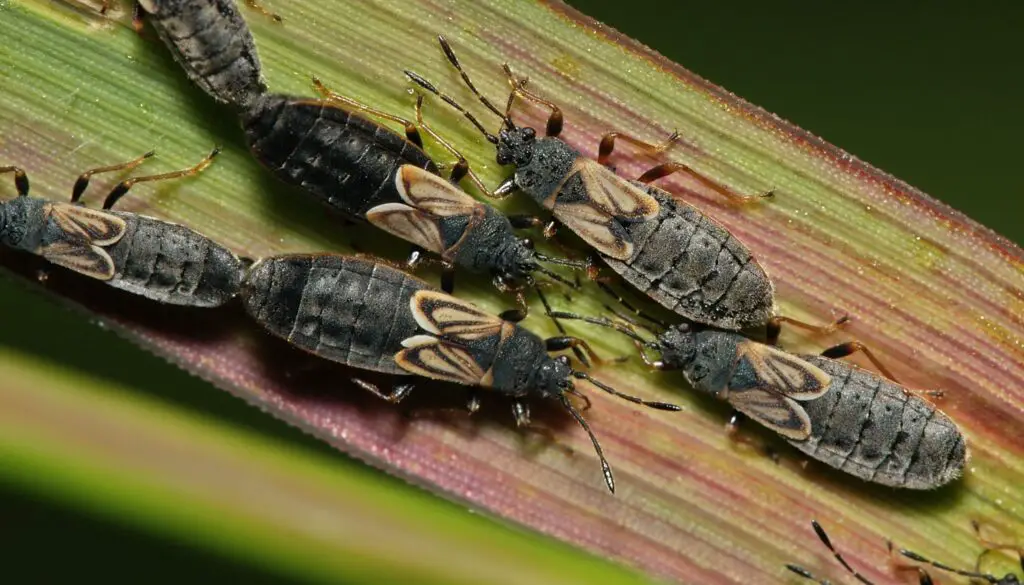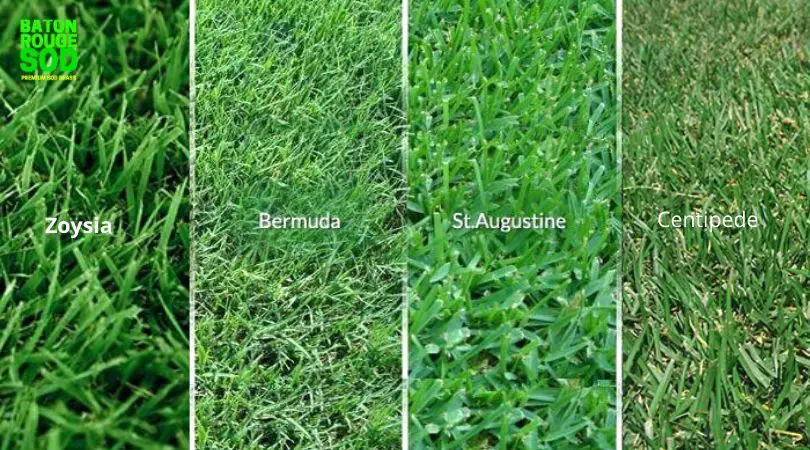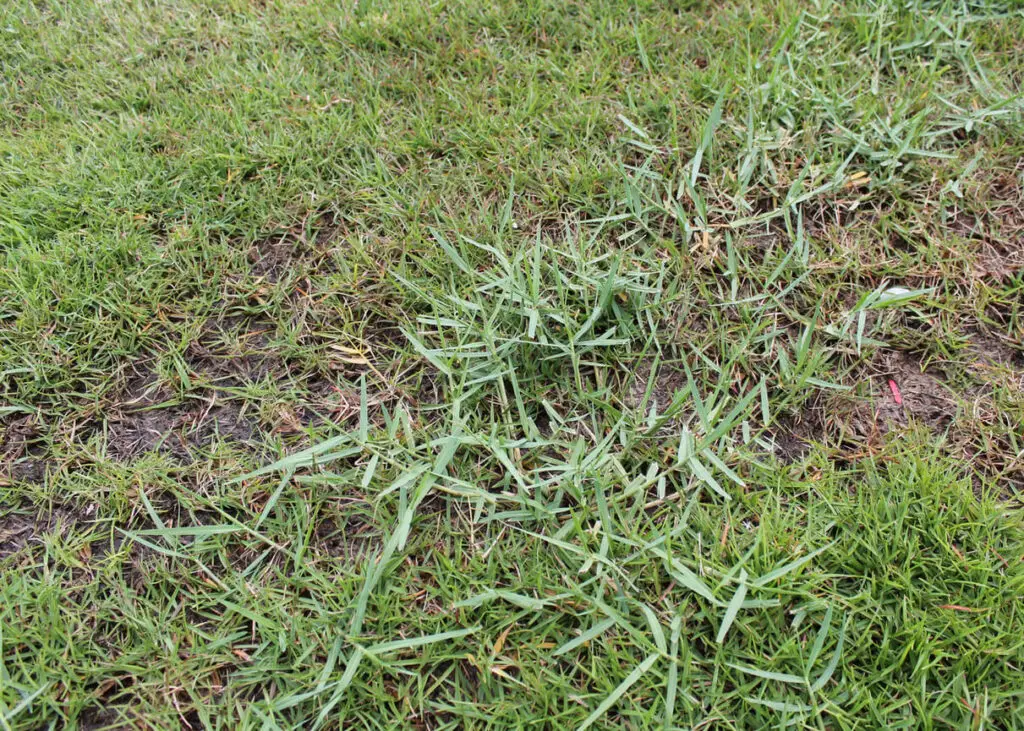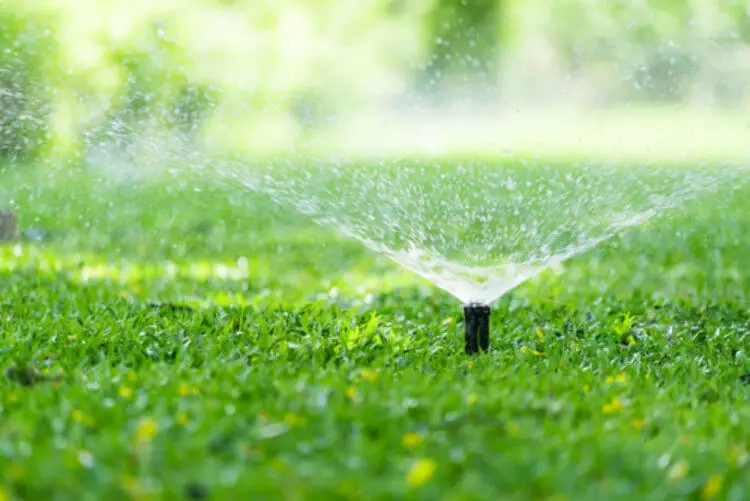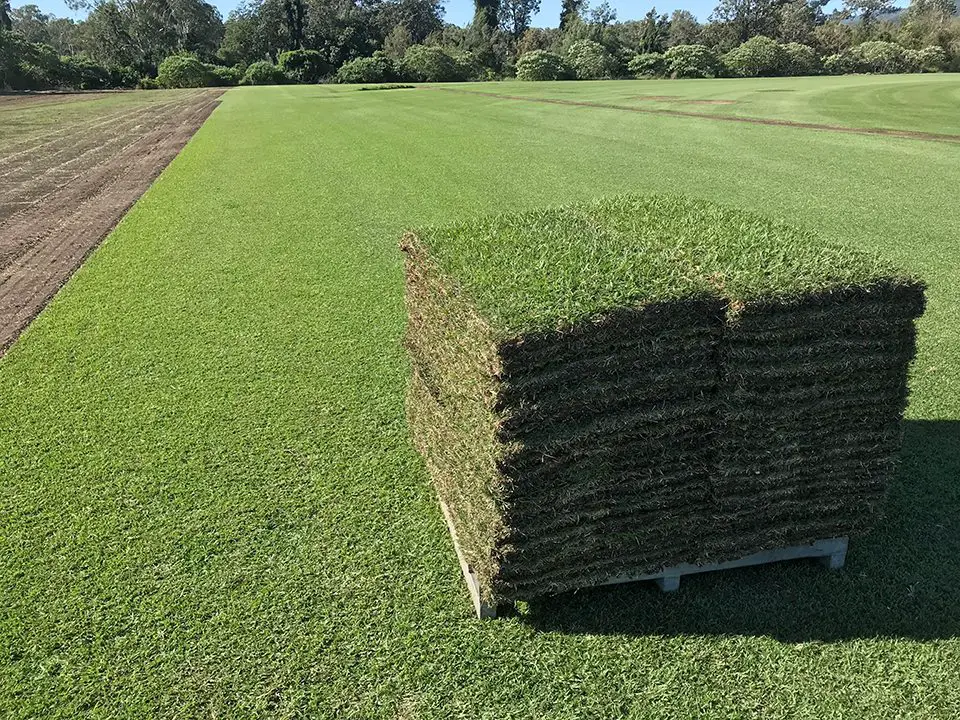How to get rid of chinch bugs
“Chinch bugs in the lawn, Chinch bugs in lawn. This is the treatment to get rid of chinch bugs in your lawn.”
Cinch bugs are a serious problem for lawns and turf. They feast on the roots of grass plants, causing them to weaken and die.
They feed on grass roots and can kill a yard in just a few years if left untreated.
Pest control is vital to keep your yard looking good and healthy.
Don’t let these nasty little critters take over!
What are Chinch Bugs?
Chinch bugs are one of the most common pests found in lawns today.
They can be a severe pest in yards, golf courses, and other areas, where they can cause severe damage to grasses.
While a few bugs here and there may not do much damage, a large infestation can quickly kill a lawn.
Chinch bugs are small, black and white insects that feast on turfgrass.
These small, black insects are attracted to warm, sunny areas and feast on the blades of grass.
They damage grass by sucking the juices from the leaves, which causes the grass to turn brown and die.
Chinchbugs are not known to transmit diseases, even though their feeding can cause extensive damage.
In severe cases, infestations can kill large patches of grass and leave it looking unsightly.

Chinch Bug Identification:
What do chinch bugs look like?
Chinch bugs are small, winged insects that are typically dark brown or black.
They have six legs and can range in size from 1/8 to 1/4 of an inch long.
Adult insects are dark brown or black and have six legs, two wings, and two antennae.
These small, black insects are about 1/5 of an inch long and have a white stripe running down their backs.
The nymphs are pale yellow with a black head and antennae.
They feed on the leaves of a wide range of plants from many families, including alder, birch, elm, juniper, oak, and willow.
The wings are held flat over the back when the insect is at rest, and the antennae are longer than the body.

What are the Different Types of Chinch Bugs?
There a few main types of chinch bug species most often found in turfgrass areas.
The Common chinch bug (Blissus leucopterus), the Southern chinch bug (Blissus insularis) and the Western chinch bug (Blissus occiduus).
Common chinch bug
The common is the most widespread species and can be found in all parts of the United States.
When you do find infestations, these species are the onesyou will find these most often.
Southern chinch bug
The southern chinch bug is found in the southeastern, southern, and western parts of the United States.
It overwinters in the egg stage.
Eggs are laid in crevices of bark or under debris and hatch in late spring.
The nymphs develop into adults by June and feed on grasses until they mate and lay eggs, which will overwinter.
Western chinch bug
The Western chinch bug is mostly found in the western states like California, Nevada, New Mexico, Arizona, and Utah.
It is the most damaging of alfalfa in these states.
In California, it is found primarily in the southern counties.
The insect also occurs in the Central Valley and coastal areas of northern California.
It has been found in limited numbers in parts of Oregon and Washington.
Hairy chinch bug
The Hairy chinch bug is found in the eastern United States.
It is a problem with corn, sorghum, sugarcane, and other grasses.
The adult bugs are about 1/4″ long, oval-shaped, and have wings with characteristic fringed edges on the forewings.
All three types feed on grasses, sucking out the plant juices with their long beaks.
This damages the plant and can eventually kill it.

Chinch Bug Lifecycle
Chinches are most active in the summer months when temperatures are warmest.
Chinch bugs have a three-stage life cycle: egg, nymph, and adult.
The entire life cycle can be completed in as little as six weeks, depending on the temperature and availability of food.
Both nymphs and adults feed on grass plants by piercing them with their mouthparts and sucking out the plant juices.
Unmetered feeding damages the plant, causing it to turn yellow or brown.
Once they mature into adults, they can live for up to two months.
Adults can live for months and produce multiple generations in a single season..
Eggs are deposited on grass blades in the spring.
The female will lay eggs on the host plant, often in groups of 20 to 30.
The egg stage typically lasts about two weeks before the eggs hatch, and the next phase begins.
Nymphs are small pale yellow or white, wingless versions of the adults that hatch and emerge from the eggs.
These nymphs feed on grasses and plants for several weeks as they mature.
They molt five times over the course of several weeks, growing larger and darker with each molt until they reach their adult stage.
Adult bugs are dark brown or black with white wings.
Do Chinch Bugs Bite Humans?
This is a common question that we get at our office.
The answer is no. Chinch bugs do not bite humans.
They are attracted to warmth and carbon dioxide, so they may approach a person if they are lying down or sleeping.
However, they do not bite or feed on human blood.
They do not have mouthparts that are capable of piercing human skin.
However, they can be a nuisance if they are present in your home or yard in large numbers.
They do not cause any health problems to humans or pets, but they can be a nuisance when it comes to your plants.
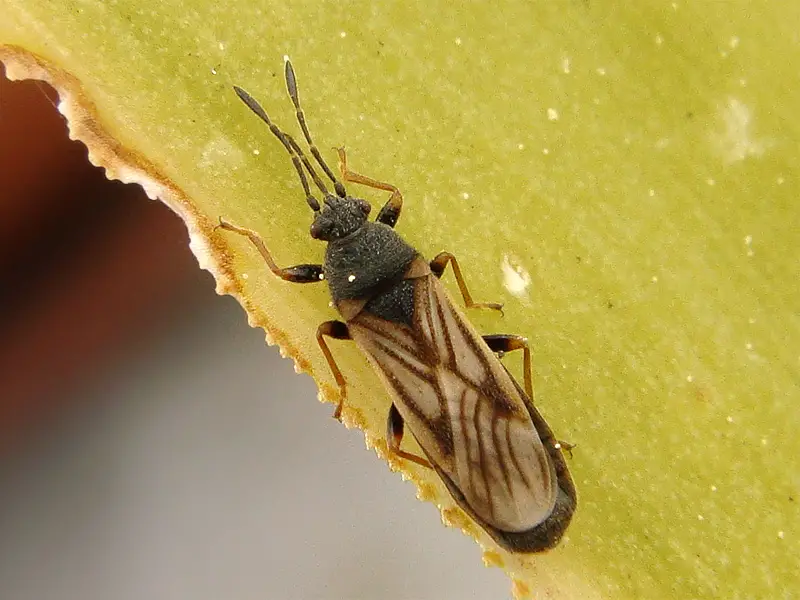
What do chinch bugs feed on?
Their primary feed source is grasses.
However, they will eat other plants if their preferred food is not available.
They damage plants by sucking the sap from leaves and stems, which can cause the leaves to turn brown and die.
What Types of Turfgrass Do Chinch Bugs Prefer?
In the United States, chinch bugs are most commonly found in the southern states where they feast on tasty turfgrass.
They like warm-season grasses like St. Augustine grass, and Bermuda grass which they are particularly fond of.
However, you can also find them feeding on Zoysia and Centipede grasses and on cool-season grasses such as Kentucky bluegrass, fescue, and rye.
Although they will feed on other types of grasses, these are their favorites.
They will destroy your green lawn if left unchecked.
How To Identify A Chinch Bug Infestation
What Does Chinch Bug Damage Look Like?
They are most common during the warm season when temperatures exceed 60 degrees F.
Here are some signs to look for if you think you might have an infestation:
1. Yellow or brown patches of grass.
They feed on the sap of grass plants, which can cause the grass to turn yellow or brown.
2. Thin or bare grass areas:
If the invasion is severe, you may notice thin or bare areas where the bugs have been feeding.
This is because the chinch bugs will suck the moisture out of the blades of grass, causing them to turn yellow and eventually die.
They will also eat the roots of the grass, causing it to die.
3. Stunted growth:
Chinch bugs can stunt the growth of your grass, causing it to appear shorter than usual.
A single bug can destroy an entire area of grass.
However, the grass may grow back.
The best defense against infiltrations is to keep your turf healthy.
4. Visual signs of insects:
If you notice small insects moving around in your lawn, this can be a sign of a serious problem.
5. Small brown or black dots on grass blades:
The droppings may appear as small brown or black dots on the grass blades.
Overall, look for lawn damage with bare spots, yellow grass, or brown dead sections.
How to Tell if Your Lawn Has Chinch Bugs?
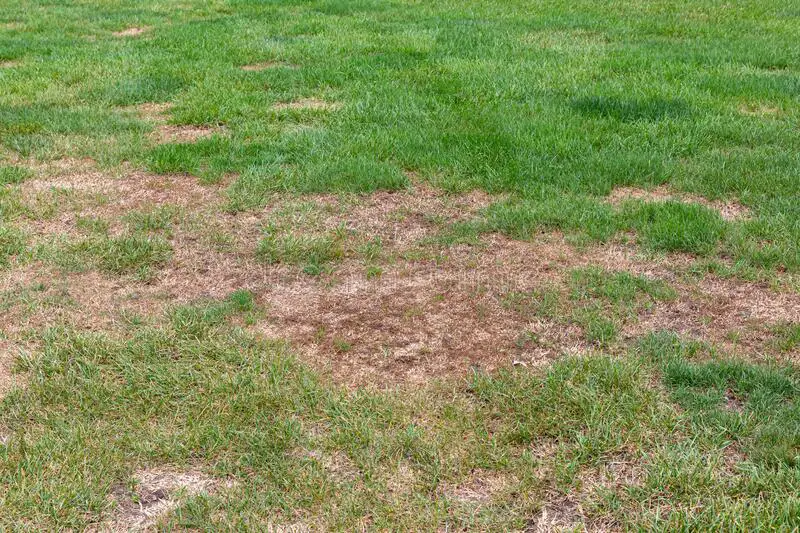
How To test for chinch bug using the Flotation Method
If you think you may have chinch bugs, there is a simple test you can do at home to find out.
The flotation method involves taking a cup of soapy water and pouring it on the area.
You will need the following supplies to test for chinch bugs using the flotation method:
- A huge bucket or container containing water
- a sheet of white paper or cardboard
- A garden trowel or something similar
- A telescopic lens (optional)
Follow these steps to run the test:
- Locate a spot on your lawn where you believe the bugs are located.
- Look for damage symptoms such as yellow or brown areas of grass.
- Dig up a small portion of grass and dirt using the garden trowel. Include any insects you come across in this sample.
- Fill the bucket halfway with water and add the soil and grass samples.
- Allow chinch bugs to float to the top for a few minutes.
- Examine the insects with a magnifying glass to see whether there are any chinch bugs.
If no bugs are found, you may need to repeat the test in different regions of the lawn or in areas with more severe damage.
It is crucial to remember that the flotation approach is not a foolproof method for detecting chinch bugs.
It can be used as a broad indicator of their presence, but more testing may be required for a more precise diagnosis.
How Do Chinch Bugs Damage Lawns?
Chinch bugs are most active in warm weather and are especially damaging to drought-stressed lawns.
Signs of infestation are often first noticed in late spring or early summer when the weather is hot and dry.
The damage appears as small, yellowish, or brownish patches of brown and dead grass.
Chinch bugs feed on grass plants by piercing the plant’s stem and sucking out the sap.
This feeding damages the plant and can cause it to wilt and die.
These critters can transform your yard fast and can quickly kill a lawn if they are not controlled.
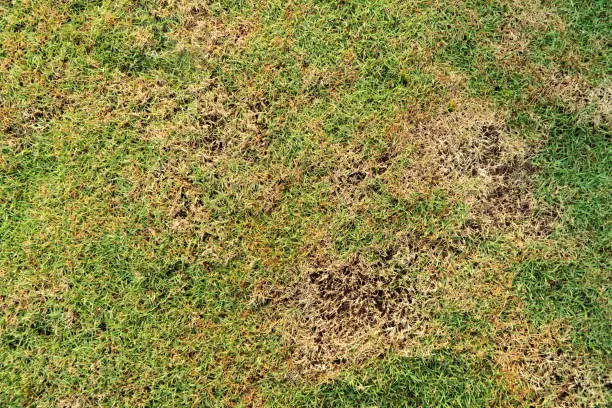
When Do Chinch Bugs Usually Appear?
What time of year do chinch bugs come out?
This is a common question among homeowners, as these can cause extensive damage to yards and gardens.
Chinch bugs are most active when temperatures are warmer, which is during spring and summer.
They are routinely most active in the summer but can be a problem for homeowners and property managers year-round in warmer climates.
However, depending on the weather, they can also be active in the fall.
When do chinch bugs usually appear?
You’re most likely to see them in the heat of the day, which is when they are most active.
What causes chinch bugs in lawns?
Several things can cause chinch bugs, including overwatering, lack of nutrients, and thatch.
One cause is simply your property location.
You’re more likely to have them in your yard if you live in an area where these pests are common.
Another factor is whether or not your turf is healthy.
A well-cared-for lawn is much less attractive to invaders than one that’s neglected.
Yards with a lot of weeds or other debris can provide hiding places and make it difficult to control them.
By understanding what causes bug invasions, you can take steps to prevent them from damaging your property.
Where do chinch bugs come from?
Chinch bugs were initially recognized in the southern United States, but they can now be found in all 50 states.
They get their name from the Spanish word for flea, “chinche.”
These pests are a serious problem for homeowners in the southern United States.
You get them in your yard by natural means, or they are introduced.
The most common way they spread is by being transported on shoes and clothing.
They can also be carried on firewood and landscaping materials.
Can lawn mowers transfer chinch bugs?
Can lawnmowers transfer chinch bugs?
Yes, Unfortunately, it is possible for them to be transferred by mowers.
If chinch bugs are present, they can be picked up by the blades of the mower and transported to other areas of the lawn.
However, this is not the most common way that chinch bugs spread.

Chinch Bug Prevention: How to Prevent Further Chinch Bug Infestations
Chinch bugs can quickly build up populations and cause extensive damage.
However, there are some things you can do to prevent them from becoming a problem.
One of the most effective ways to prevent turf insect damage is to use a granular insecticide.
This will help to keep chinch bug populations under control and reduce the amount of damage they can cause.
Insecticides containing pyrethrin or bifenthrin have the benefit of treating your lawn for multiple invaders.
These products will kill the insects on contact and help prevent them from coming back.
Another benefit is the insect killer also repel them and keep them away.
Another thing you can do is to keep your turf healthy and free of thatch.
Thatch is a layer of dead grass and other organic material that can build up over time.
It provides a perfect environment for critters to thrive in.
You should also water regularly, especially during dry weather.
Chinch bugs are attracted to dry, stressed grass. You can make your garden less appealing to them by keeping it hydrated.
In addition, it’s important to fertilize regularly.
Fertilization helps keep grass healthy and strong, making it more resistant.
Fortunately, you can take steps to prevent and control these issues.
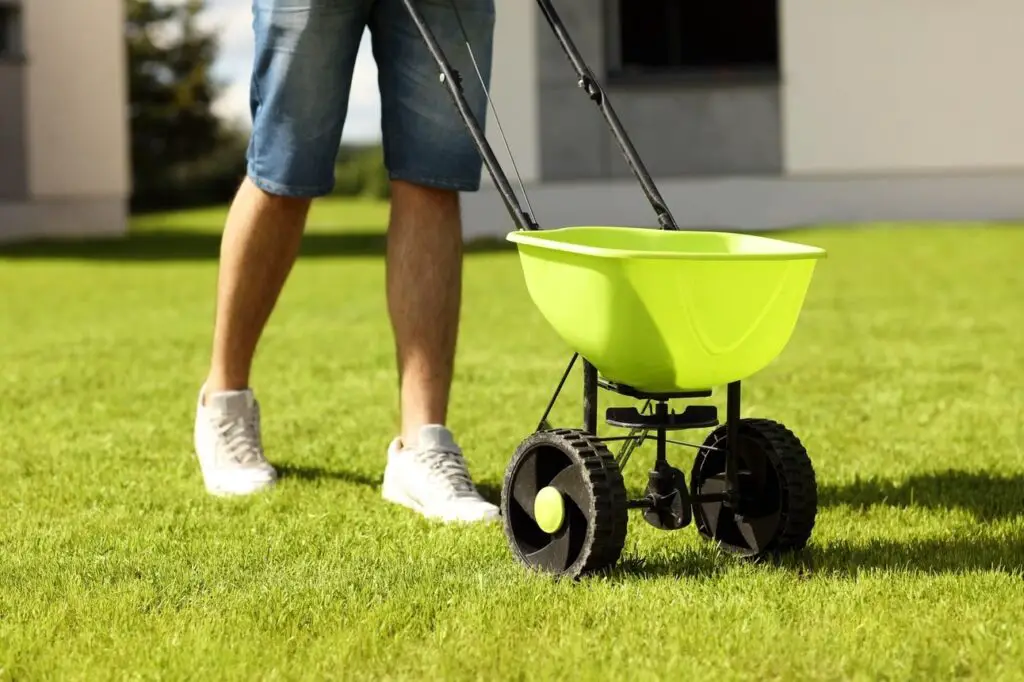
Preventing Chinch Bugs: How to Prevent Further Infestations
How to Get Rid of Chinch Bugs
If you have chinch bugs, don’t despair. There are several things you can do to get rid of them.
The first step is to identify the problem. If you see these symptoms, it’s time to take action.
The fastest way is to get an insecticide labeled for chinch bugs and apply it evenly to the soil surface.
You can use a granular or liquid spray pesticide.
Always follow the label instructions carefully when using a pesticide.
Inspect regularly for damage and treat as soon as you see signs of issues.
There are several products available that will kill chinch bugs.
Look for an insecticide that is specifically labeled for use against these species.
Follow the directions carefully, and apply the product evenly over the affected area.
You may want to contact a professional pest control company in your area for assistance, as they will have access to the best products and expertise.
Watering regularly can help to prevent chinch bugs.
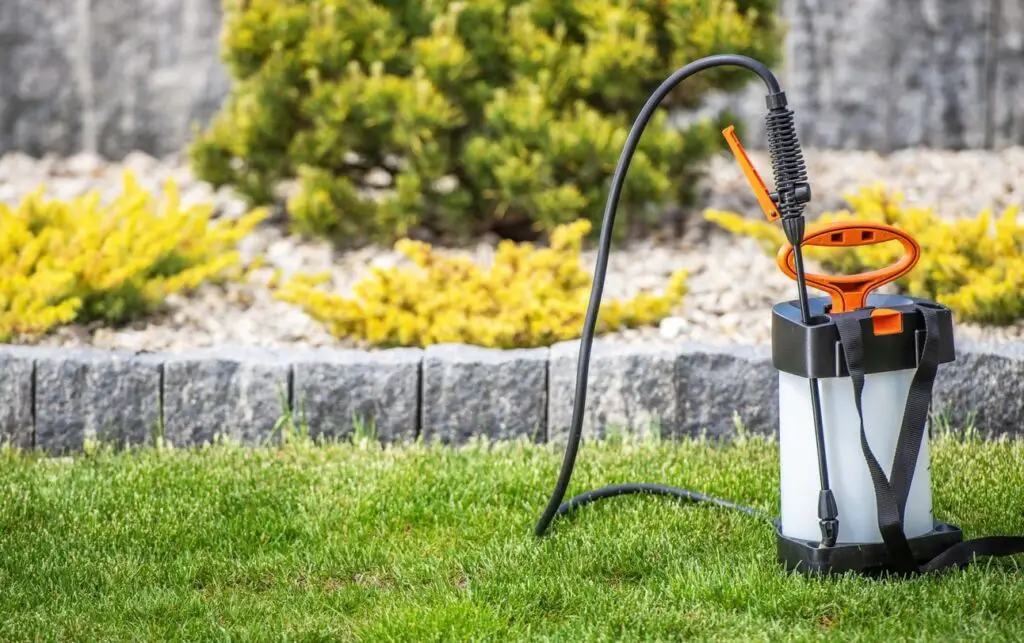
How to Kill Chinch Bugs
bug killer pesticides will kill lawn pests
Martin’s Cyonara is a liquid and works great
Use a sprayer to apply the insecticide over your entire lawn.
water your lawn
What’s the best Chinch Bug Killer?
Kill chinch bugs with broad-spectrum pesticides.

Use soap to get rid of chinch bugs.
You don’t have to reach for the pesticide if you have chinch bugs in your yard.
They are actually quite easy to control with a simple soap and water solution.
Just mix up a batch of soapy water and spray it on the affected area.
The soap will kill some on contact.
You may need to reapply every few days to keep the population under control, but soap is a safe and effective way to get rid of these issues.
How To Control Chinch Bug
Use a preventer to control chinch bug nymphs and adults.
Chinch bugs can be controlled with insecticides, but it is important to know how to identify them so that you can treat them accordingly.
They are difficult to control because they reproduce quickly and are resistant to many pesticides.
The best way to prevent bug invasions is to maintain a healthy lawn and catch them early.
These pests are difficult to control because they reproduce so quickly.
A single female can lay up to 500 eggs at a time! Chinch bugs feed on the sap of plants, weakening the plant and eventually killing it.
These bugs are especially fond of St. Augustine grass, but they will feast on other types of grasses, corn, tomatoes, and beans.
To control chinch bugs, start with a healthy yard.
Mow regularly and keep the grass at the height of 2 to 3 inches.
Water deeply but infrequently to encourage deep roots.
Use an insecticide labeled for use against chinch bugs on your lawn according to the manufacturer’s instructions.
Be sure to treat the entire area, not just spots where you see the damage.
DIY pest control and chinch bug control
Reseed Bare Spots Caused By Chinch bug damage.
Bring your lawn back.
Good Lawn Care To Keep Lawn Pests Away.
chinch bug treatment: How To Get Rid Of Chinch Bugs
Lawn pests are a common problem for homeowners. But there are some simple steps you can take to keep them away.
Use good fertilizer on your lawn regularly to prevent problems. Aerating your lawn also helps. And be sure to de thatch it every year or so.
Of course, you also need to water your lawn regularly. This will keep the grass healthy and make it less attractive to future infiltrators..
Adults feed on a wide range of trees and shrubs.
Chinches are most active in the spring and summer, and they lay their eggs in the thatch of turfgrasses.
Homeowners should be vigilant in checking throughout the year, as they can appear anytime.
These small insect numbers can quickly get out of control if not treated.

